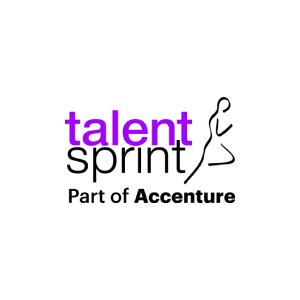The Present and Future of Data Science and Machine Learning

There is now an overwhelming demand for industry-ready Data Science professionals who can lead digital transformation journeys. In a recent webinar, Dr. Chiranjiv Roy, Senior Vice President and Practice Head of Data Analytics at SG Analytics, shared his views on how professionals can train and tap into such opportunities.
Data Science and Machine Learning have become a savior for several organizations across industries in accelerating their digital transformation journey. Today this field is highly evolved, and so are the imperatives and opportunities for Data Scientists.
“Keep telling stories. Be a great Data Scientist. New tools, new cross-pollination, and new purposes – a lot is changing for data professionals. But there is no excuse not to learn the fundamentals. And not to tell delightful stories. We need to foresee the future, develop it, and bring it here.”
That was the poignant thought that Dr. Chiranjiv Roy, Senior Vice President and Practise Head of Data Analytics at SG Analytics, a leading provider of data-centric research and contextual analytics services, stirred up when he shared the trends and forces of Data Science and Machine Learning in a recent webinar.
Dr. Roy thoroughly explained these aspects and then interpreted them from the context of professional capabilities. He unlocked the fascinating elements of story-telling and solving as he drilled more profound into the paradigm of Data Science and Machine Learning.
“Data Science is not a fresh idea. But it is becoming more and more important for future professionals.” He augured. Are we not doing it all already – like Analytics, etc.? Yes, we are. But today, 80 percent of data is unstructured. We need highly scalable algorithms. Look at how people have been hiring from 2018 onwards – that reflects a decade’s switch. Statistical modeling became Data Science. Things have been evolving in this space.
Join hands
He also pointed out how today’s Data Scientists have to understand software engineers. Data Analysts and Data Engineers have to work together today. The way we used to approach Data Science has also evolved. In traditional Data Science, it was about modeling and reports. Now we need to stand out, scale out of our general ways of development. Now acquisition, modeling, etc., are different. You do not choose a model and sit down for the next three months. Today you run the models on the fly and tune them as required. The demand requires you to architect algorithms on the move. It does not require you to know everything. But you need to understand the entire picture. A Data Scientist has to create a wireframe and pass it on to a Machine Learning Engineer, and hence they should know the programming languages here. The model can take shape as expected. It is not a Jack-of-all-Trades thing, but one should be cognizant of the overall context.
Also, the world is about to grow strongly toward IoT. Every sensor and device in IoT is churning signal data. That’s when we need Python to transform the data. We need to watch patterns to see fluctuations etc. IoT and AI will be big, and Data Science would be a vital bridge and enabler.
Stop worrying
TalentSprint’s industry interactions have been covering many such issues as an online interactive series on DeepTech with leaders, experts, and trendsetters in the emerging technology space like AI, ML, Cyber Security, FinTech, IoT, etc.
In this episode, Aritro Bhattacharyya, Senior Director Sales at Marketing at TalentSprint, asked Dr. Roy many exciting questions that came from curious and ambitious professionals and learners. They dotted many areas of the future map.
Do I need to be a mathematician to become a Data Scientist? Someone asked in the webinar. Yes, said Dr. Roy. But to what degree would depend on a host of factors.
There were also questions about the relevance of languages with low-code platforms. Dr. Roy reminded everyone about the days when calculators were not around. “Have we forgotten how to calculate after calculators? So a low-code tool will still need you to know the methodologies, like the difference between a support vector machine and a classifier. Do you want a regression or a classifier for a problem?” he encouraged minds to ask and explore.
Be patient
Are our Data Science and Analytics the same things or different paths? It’s an evolution, as Dr. Roy clarified. “You need to solve a problem. Then, you start deep diving into where the data would come from. If it’s petabyte of data, you cannot make a model on that. First, get the data in line, clean it up, store it, etc. Multiple mathematical models are where engineers come in. The daily data work is usually 80 percent Data Engineering, 15 percent Data Analytics, and five percent is then finding the best model and deploying it. This is where a Data Scientist comes in.”
A model is a child. It has to grow. It takes time. It takes evolution. And every problem is unique. To solve a problem, nurture it as a child. It will also make mistakes. So treat the model as a child. Give it time to learn and grow, he advised.
Companies are investing in new competencies as we move ahead. Dr. Roy observed that – every organization has its problem to solve. The expectation from a Data Science professional is about gathering as much knowledge as possible in the first four years. But start diversifying across different domains.
Data Science is the art of portraying science. Domain, technology, and process are all critical, and the art constantly evolves through creativity and the design of portraying anything.
It is the sexiest job of the century. There is no scope for short-cuts, he advised aspiring professionals.
“The world is one big data problem.” – as Andrew McAfee said.
That sounds like a lot of challenge, but in the same vein, a lot of opportunity for the future of Data Science professionals. Hence this is the right time to develop new capabilities with Data Science and Machine Learning to stay relevant and grow in careers.

TalentSprint
TalentSprint is a leading deep-tech education company. It partners with esteemed academic institutions and global corporations to offer advanced learning programs in deep-tech, management, and emerging technologies. Known for its high-impact programs co-created with think tanks and experts, TalentSprint blends academic expertise with practical industry experience.



